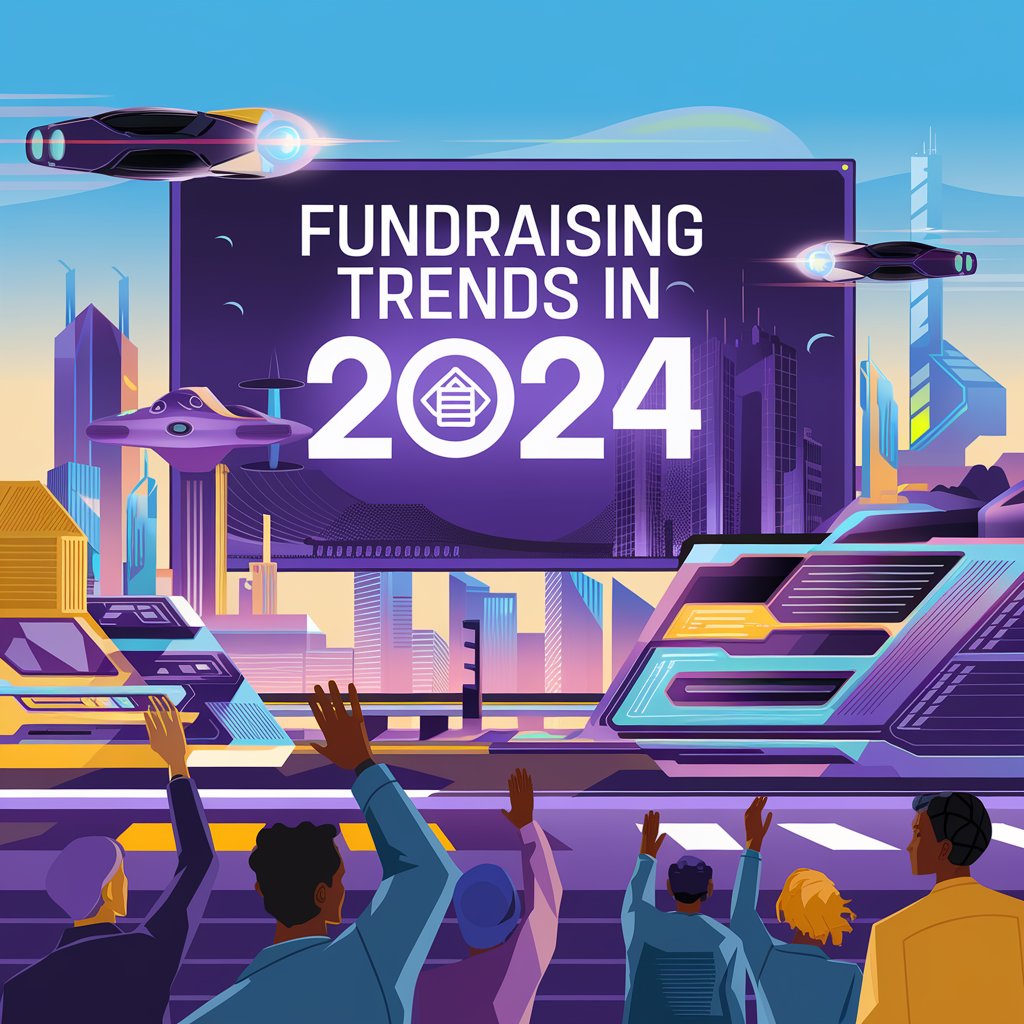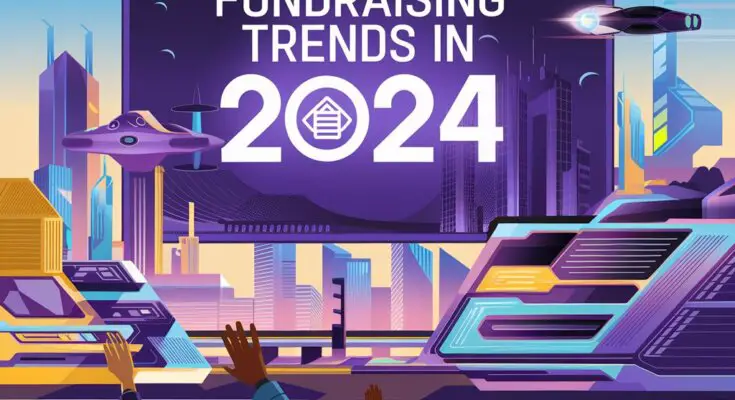The world of nonprofit fundraising is constantly evolving, and understanding the Fundraising Trends in 2024 is crucial for staying ahead.
In this blog post, we’ll explore the key fundraising trends shaping the landscape this year. From digital fundraising strategies to donor engagement techniques, we’ll break down each trend, offering practical examples that you can apply to your nonprofit.
So, whether you’re looking to boost donations or expand your donor base, this guide is for you!

Why Fundraising Trends is SO Important?
Fundraising is the lifeline of any nonprofit organization. With the right fundraising strategies, you can increase donations and make a greater impact in your community.
Understanding the latest trends can help your nonprofit stay relevant and attract new supporters.
The fundraising landscape is evolving rapidly in 2024, and nonprofits that adapt to these changes are more likely to thrive.
Trend 1: The Rise of Digital Fundraising Campaigns
With the increased use of social media and online platforms, digital fundraising continues to dominate. In 2024, more nonprofits are turning to crowdfunding platforms, social media campaigns, and peer-to-peer fundraising to reach a wider audience.
Example: Imagine a small animal rescue that uses Instagram and Facebook to launch a crowdfunding campaign for a new shelter. By sharing engaging videos of rescued animals, they create an emotional connection with followers, encouraging them to donate and share the campaign with friends. This approach not only boosts donations but also expands the nonprofit’s reach.
Trend 2: Personalization in Donor Communication
In 2024, personalized communication is no longer a luxury—it’s a necessity. Donors expect to feel seen and valued.
Gone are the days of generic email blasts; nonprofits need to tailor their messages to each donor’s interests and donation history.
Example: A youth literacy nonprofit might use email segmentation to send tailored messages to different donor groups. For instance, first-time donors might receive a welcome email, while long-time supporters receive updates on how their contributions have made a difference. By using personalized messaging, this nonprofit strengthens its relationship with donors and increases the likelihood of future donations.
Download Now: Top 10 Donor Stewardship Strategies for Nonprofits + Free Donor Engagement Checklist
Trend 3: Focus on Recurring Giving Programs
Recurring giving programs continue to gain traction in 2024. These programs allow donors to make smaller monthly contributions, which add up to significant support over time. They provide a steady stream of income and help nonprofits plan long-term projects.
Example: A food bank might create a monthly giving club where donors contribute $10 a month. In exchange, they receive a monthly update about the impact of their donations, including stories of families they’ve helped. This continuous engagement keeps donors invested and motivated to keep contributing.
How One Nonprofit Turned Trends into Success
Let me share the story of a nonprofit called Hope for Tomorrow, which provides mentorship for at-risk youth.
In 2023, Hope for Tomorrow was struggling with donor retention and declining donations. They decided to revamp their approach by incorporating the latest fundraising trends.
Here’s what they did:
First, they shifted to a digital fundraising campaign, utilizing TikTok and Instagram Reels to share short clips of mentors working with kids. The response was incredible, as donors connected with the organization’s mission in a visual and emotional way.
Next, they implemented personalized email campaigns, sending thank-you videos from the kids directly to donors. This personal touch made donors feel valued, and many commented that they had never experienced such personalized appreciation.
Lastly, they launched a recurring giving program, asking their supporters to contribute just $5 a month. Many donors who couldn’t afford one-time large donations found this more manageable and joined the program.
By the end of 2023, Hope for Tomorrow had doubled their monthly income, allowing them to expand their mentorship program to more schools.
Hope for Tomorrow’s story is a testament to how adapting to fundraising trends can transform an organization’s future.
Trend 4: The Power of Peer-to-Peer Fundraising
Peer-to-peer fundraising is gaining popularity as it allows supporters to fundraise on behalf of the organization. This method expands the reach of your campaign as your supporters tap into their own networks, bringing in new donors.
Example: A nonprofit focused on clean water might organize a virtual walkathon where participants create their own fundraising pages and share them on social media. Each participant sets a goal to raise $200, and with 50 participants, the nonprofit can raise $10,000 without significant overhead costs. This approach also builds a sense of community among supporters.
Trend 5: Hybrid Events Are Here to Stay
The hybrid fundraising model, which combines in-person and virtual elements, continues to thrive in 2024. These events are accessible to a broader audience, making it easier to engage local and global donors alike.
Example: A cultural heritage nonprofit might host a virtual art auction where people can bid online, while simultaneously holding an in-person gallery for local supporters. This hybrid approach allows them to reach more people, increasing the potential for donations.
Trend 6: Transparency and Accountability
In 2024, donors are more interested in how their money is used. They want to know the impact of their donations. Nonprofits that are transparent about their finances and program outcomes tend to retain donors better.
Example: A wildlife conservation organization might create an annual impact report with clear charts and visuals showing how donations were used to protect endangered species. This kind of transparency helps build trust and encourages donors to continue their support.
Trend 7: The Role of AI in Fundraising
Artificial Intelligence (AI) is making waves in the nonprofit sector, helping organizations analyze donor data, predict giving patterns, and automate communication.
AI tools can assist in creating personalized messages, segmenting donor lists, and even suggesting optimal times for campaigns.
Example: A nonprofit fighting hunger might use AI to analyze past donor behavior, identifying which supporters are more likely to respond to seasonal appeals. This data-driven approach allows them to target the right donors with the right message at the right time, maximizing their impact.
Stay Ahead with These Trends
To continue learning and growing in your fundraising efforts, subscribe to the Nonprofit Navigators Newsletter. You’ll get expert tips, strategies, and resources delivered straight to your inbox. Plus, don’t forget to download our free Top 10 Donor Stewardship Strategies for Nonprofits + Free Donor Engagement Checklist. It’s the perfect tool to help you engage donors and boost your fundraising efforts in 2024!




